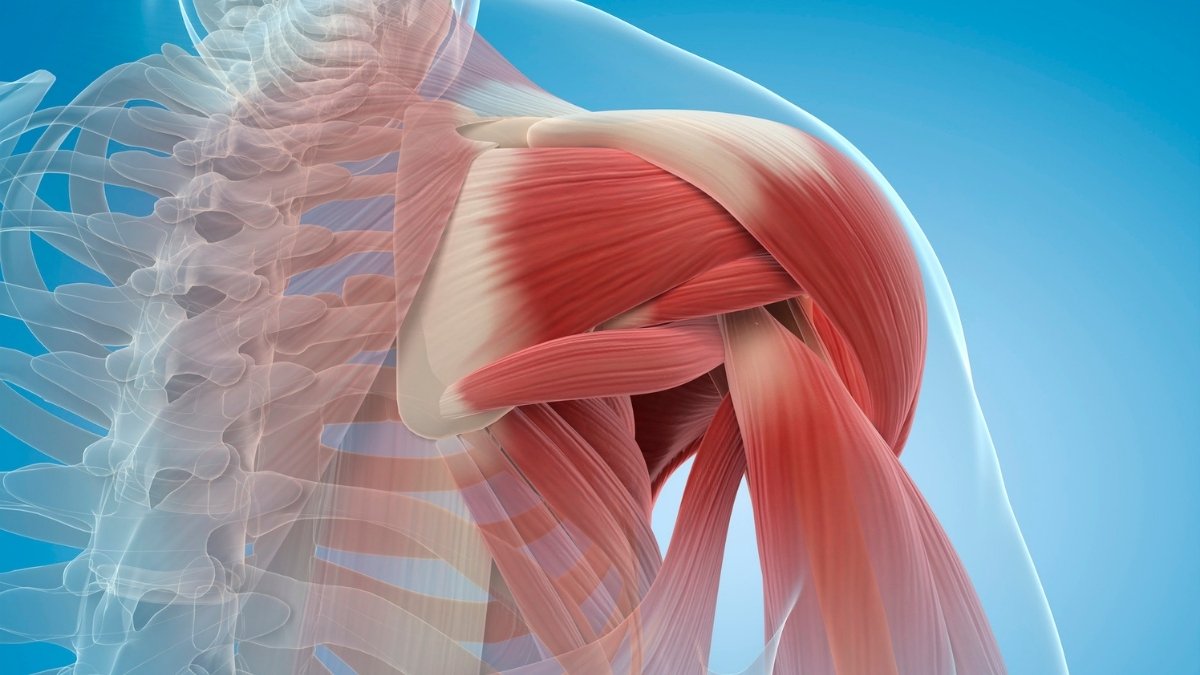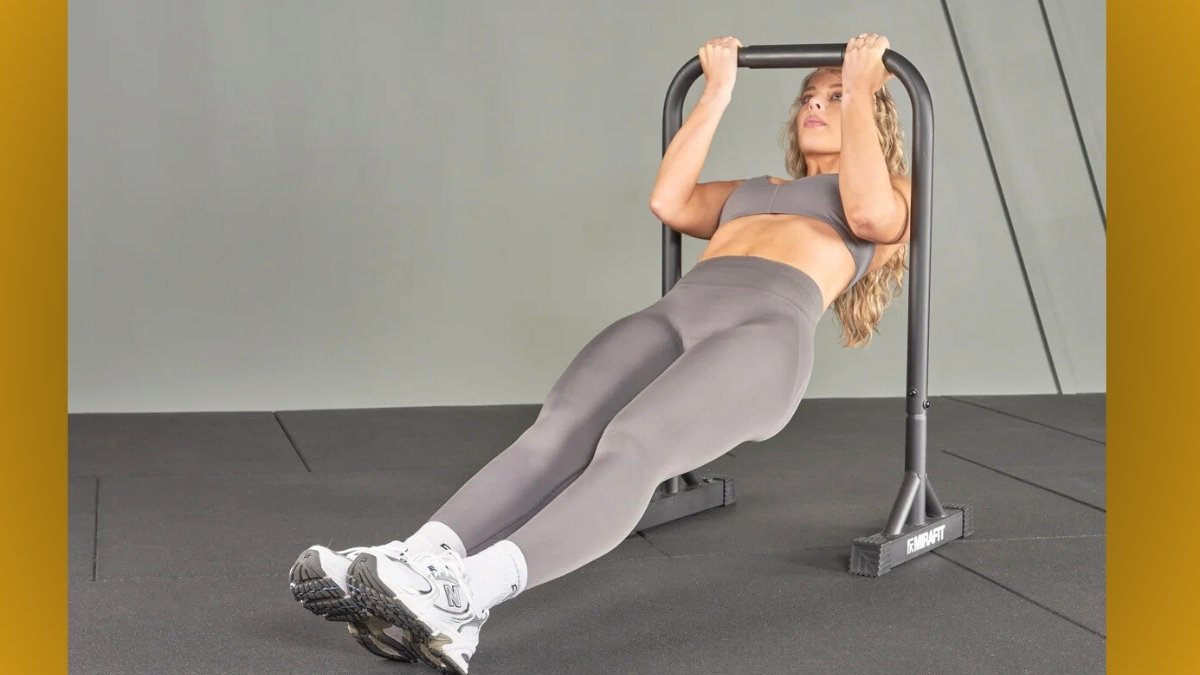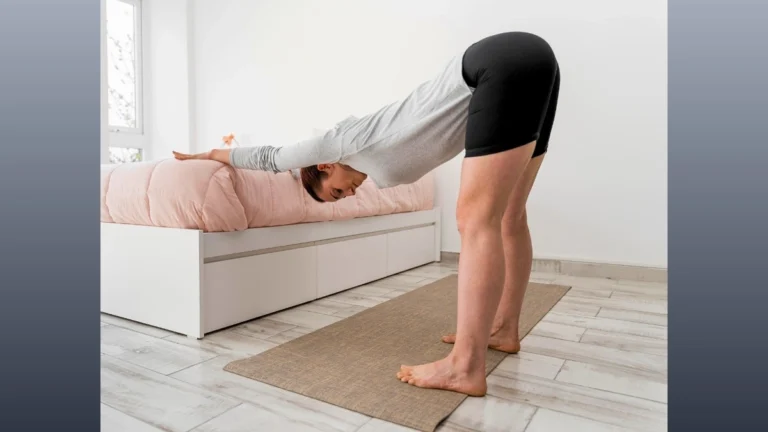Build Muscle Fast Without Weights: A Complete 5-Moves Home Workout Plan

If you think you need a fully-equipped gym to build serious muscle, a growing body of 2025 research proves otherwise.
Maybe you can’t afford a gym membership. Or you travel too much to stick with one location. Perhaps you just hate crowded weight rooms. The good news: bodyweight exercises build muscle just as effectively as weights when you train smart.
Here’s what most people get wrong. They think bodyweight workouts are only for beginners or that you hit a ceiling fast. Not true. Elite athletes use bodyweight training because it works—if you apply progressive overload.
This article gives you everything you need to build real muscle at home with no equipment needed. You’ll learn the science behind why bodyweight exercises trigger muscle growth. You’ll get a complete 5-move routine that hits every major muscle group in under 25 minutes. And you’ll discover how to keep making progress week after week without touching a single weight.
Build Muscle at Home
The Science Behind It
Progressive Overload
Move 1: Tempo Push-Ups
Move 2: Bulgarian Split Squats
Move 3 & 4: Rows + Bridges
Pull chest to bar, squeeze shoulder blades
Lift hips, squeeze glute 2 sec at top
Move 5 + Weekly Schedule
Core, shoulders, cardio combo
Your Action Plan
The Science Behind Bodyweight Muscle Building
Research from 2016 proves bodyweight exercises trigger the same muscle growth as weights when you use full range of motion. The key isn't how much you lift—it's how you challenge your muscles. A Kennesaw State University study found something surprising: a 20-minute bodyweight workout created more muscle stimulus than running on a treadmill at 85% max heart rate.

Here's what actually builds muscle. When you lower yourself slowly during a push-up, you create mechanical tension. This tension signals your body to start muscle protein synthesis—the process that builds new muscle tissue. Time under tension matters more than the weight you're moving. Research shows 40-60 seconds of tension per set maximizes hypertrophy.
Think about a slow push-up. You lower for 3 seconds, pause for 1 second, push up for 2 seconds. That's 6 seconds per rep. Do 8-10 reps and you hit the sweet spot for muscle growth.

Studies also confirm training each muscle group twice per week produces better results than once weekly. Your muscles recover faster than you think. This means you can build serious muscle at home with the right approach—no gym membership required.
Understanding Progressive Overload Without Weights
Progressive overload simply means making your muscles work harder over time. You can do this four ways: add more reps, rest less between sets, try harder exercise versions, or slow down your movements. All four methods work without touching a single weight.
Start with the basics. Can you do 10 push-ups today? Aim for 12 next week. Hit 15 the week after. This gradual increase forces your muscles to adapt and grow stronger. The key word is gradual. Jump from 10 to 20 reps too fast and you risk injury or burnout.

Keep increases under 10% each week. If you do 50 total reps this week, shoot for 55 next week. Small steps add up to big gains over months.
Exercise variations give you another path forward. Regular push-ups feel easy? Move to decline push-ups with your feet elevated. Then try diamond push-ups. Eventually work toward one-arm push-ups. Each variation adds difficulty without adding weight.
Time under tension works too. Lower yourself in a squat over 4 seconds instead of 2 seconds. Your muscles work twice as long. That's progressive overload.

Track everything in a notebook or phone app. Write down reps, sets, and which variation you used. You can't improve what you don't measure. When an exercise feels comfortable for two workouts in a row, it's time to progress.
Your body adapts to stress. Give it new stress regularly and it will keep building muscle. No weights needed—just smart training progression.
The 5-Move Muscle-Building Routine
This routine hits every major muscle group in 20-25 minutes. Do it 3-4 times per week. Each exercise follows proven principles that trigger muscle growth—the same ones used by elite athletes. No equipment needed beyond a chair and something to pull from.
Move 1: Tempo Push-Ups (Chest, Shoulders, Triceps, Core)
Slowing down your push-ups forces more muscle fibers to work. Research shows controlled movement builds strength faster than rushing through reps. The slow lowering phase—called the eccentric—creates maximum time under tension. That's what makes muscles grow.

Regular push-ups work your chest. Tempo push-ups work your chest, shoulders, triceps, and dozens of stabilizer muscles that weights miss.
How to do it: Get in high plank position. Hands slightly wider than shoulders. Lower your body slowly—count to 3 or 4 seconds. Keep elbows at 45-degree angle, not flared out. Pause 1 second when your chest hovers above the ground. Push up fast in 1-2 seconds. Start the next rep immediately. No rest at the top.
Do this: 3-4 sets of 8-15 reps. Rest 60-90 seconds between sets.
Make it harder over time: Week 1-2, use normal tempo (3 seconds down, 1 second up). Week 3-4, hold the bottom position for 2 seconds. Week 5 and beyond, put your feet on a chair or try archer push-ups where you lean to one side.
Don't make these mistakes: Letting your hips sag. Pushing your butt up in the air. Rushing through reps to hit a number.
Move 2: Bulgarian Split Squats (Quads, Glutes, Hamstrings)
Single-leg exercises reveal and fix muscle imbalances. Your stronger leg can't help your weaker leg. This forces both sides to develop equally. You'll build more muscle without adding any weight.

This move hammers your quads, glutes, and hamstrings while improving your balance.
How to do it: Find a chair or bench about 12-18 inches high. Put your rear foot on it. Step your front foot forward 2-3 feet. Lower slowly over 3 seconds until your back knee almost touches the ground. Drive through your front heel to stand up in 2 seconds. Finish all reps on one leg before switching.
Do this: 3 sets of 10-15 reps per leg. Rest 60-90 seconds between legs.
Make it harder over time: Add more reps—go from 10 to 15. Slow down the lowering phase to 4-5 seconds. Pause at the bottom for 2 seconds. Hold water bottles in each hand or wear a loaded backpack.
Your front knee might wobble at first. That's normal. Your stabilizer muscles are learning.
Move 3: Inverted Rows (Back, Biceps, Rear Delts)
All those push-ups need a counterbalance. Rows strengthen your back and prevent the rounded shoulders that come from too much pushing. Your back has huge muscles that respond fast to training.

You need something sturdy to pull from. A bar set at waist height works. So does a sturdy table you can fit under.
How to do it: Lie underneath the bar. Grab it with palms facing away from you. Keep your body straight like a plank from head to heels. Pull your chest to the bar in 2 seconds. Squeeze your shoulder blades together at the top. Lower slowly over 3 seconds. Stay tight—no sagging.
Do this: 3-4 sets of 8-12 reps. Rest 60-90 seconds between sets.
Make it harder over time: Lower the bar height—this increases the angle and difficulty. Elevate your feet on a chair. Pause for 2 seconds at the top. When these get easy, start working toward pull-ups.
No equipment? Use a door frame (if it's sturdy) or loop a towel over a door and do towel rows.
Move 4: Single-Leg Glute Bridges (Glutes, Hamstrings, Core)
Your glutes are the biggest muscle group in your body. They deserve direct work. This move builds your backside, protects your lower back, and fixes the imbalances that cause injuries.

Most people sit all day. This exercise wakes up muscles that fall asleep.
How to do it: Lie on your back. One foot flat on the floor, knee bent. Other leg straight out. Drive through your planted heel and lift your hips up. Raise them until your body forms a straight line from shoulders to knee. Squeeze your glute hard at the top for 2 seconds. Lower slowly over 3 seconds.
Do this: 3 sets of 12-15 reps per leg. Rest 45-60 seconds between legs.
Make it harder over time: Increase reps from 12 to 20. Put your foot on a low box or step. Hold the top position for 3 seconds. Slow the lowering phase to 5 seconds.
You should feel this in your glute and hamstring, not your lower back.
Move 5: Mountain Climbers (Core, Shoulders, Hip Flexors, Cardio)
This move combines a plank, a sprint, and a mobility drill. It works muscles from your shoulders to your calves while keeping your heart rate up. That burns extra calories while building muscle—a rare combination.

Mountain climbers finish your workout strong and build the endurance you need for daily life.
How to do it: Start in high plank. Hands under shoulders. Body straight. Lock your core tight so your hips don't twist. Drive your right knee toward your chest explosively. Quickly switch and drive your left knee forward. Keep switching legs in a running motion. Maintain steady rhythm—don't speed up so fast that your form breaks down.
Do this: 3-4 sets of 30-60 seconds OR 20-30 reps per leg. Rest 45-60 seconds between sets.
Make it harder over time: Go from 30 seconds to 60 seconds per set. Increase speed while keeping perfect form. Try cross-body mountain climbers where you drive your knee toward the opposite elbow. Put your hands on a low platform to increase the challenge.
How to Structure Your Weekly Workout Schedule
Doing these exercises once won't build muscle. You need a smart weekly schedule.
Research proves training each muscle group 2-3 times per week creates the best muscle growth. More than that and you don't recover. Less than that and you leave gains on the table. Your muscles need at least 48 hours between sessions to repair and grow stronger.

Here's the truth about rest days: muscle grows during recovery, not during workouts. Your workout damages muscle fibers. Rest rebuilds them bigger and stronger.
3-Day Schedule (Best for Beginners): Monday: Full 5-move routine Wednesday: Full 5-move routine
Friday: Full 5-move routine Weekend: Walk, stretch, or yoga
This schedule gives you a full day between workouts. Simple and effective.
4-Day Schedule (For Faster Progress): Monday: Upper body (Push-ups, Rows, Mountain Climbers) Tuesday: Lower body (Split Squats, Glute Bridges) Thursday: Upper body Friday: Lower body
This split lets you train more often without overtraining. Each muscle group still gets 48+ hours to recover.

Active recovery matters too. Walk for 20 minutes. Do gentle yoga. Stretch while watching TV. Light movement speeds up muscle recovery by increasing blood flow. Just don't go hard enough to create new muscle damage.
Final Thoughts:
The evidence is clear. Bodyweight exercises build muscle at home just as effectively as gym equipment when you apply progressive overload. Science backs this up. Your results will prove it.
You now have a complete 5-move routine that targets every major muscle group in 20-25 minutes. No equipment needed. Each exercise uses proven methods—time under tension, progressive overload, and proper training frequency—to trigger muscle growth.

Here's what separates people who build muscle from those who quit: consistency and nutrition. Show up 3-4 times per week. Track your reps and sets in a notebook. Add one more rep each week or slow down your tempo. Eat enough protein and calories to fuel growth.
Start today with the routine exactly as written. Focus on perfect form over high reps. When an exercise feels comfortable for two straight workouts, make it harder using the progression strategies you learned.






